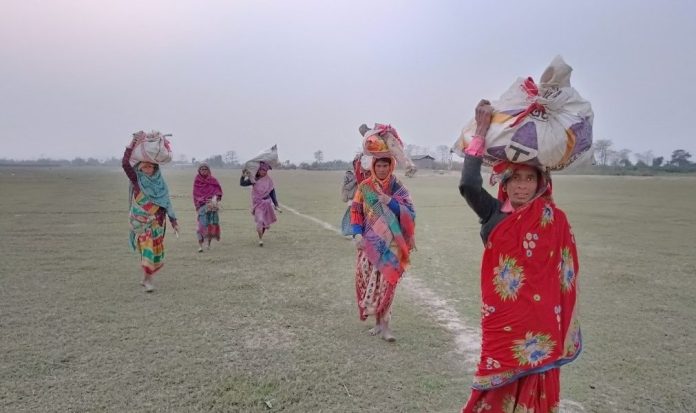18 Jun. 24: In Assam’s Darrang district, the village of Dhalpur has become a symbol of the ongoing conflict and displacement faced by the Miya Muslim community. Known nationally after a brutal eviction drive in September 2021, the area has seen a resurgence of state-led expulsions, with the latest occurring in May 2024, affecting hundreds of families.
A Community Under Threat
The Bengali Muslims, often derogatorily called “Miya” in Assam, have been targeted under allegations of being illegal immigrants from Bangladesh. These accusations have fueled communal tensions and led to systematic evictions, which human rights advocates argue are based on unfounded claims and violate the basic rights of these long-settled communities.
Historical Context
The anti-Muslim sentiment in Assam can be traced back to the anti-foreigners’ agitation of 1979-1985, which called for the identification and expulsion of supposed Bangladeshi immigrants. This agitation, led by local groups such as the All Assam Students’ Union, culminated in the Assam Accord of 1985 but left a lasting impact on the state’s social fabric. The narrative of illegal migration has persisted, leading to periodic violence and displacement, particularly against the ‘Miya’ Muslims.
Recent Eviction Drives
The BJP’s rise to power has seen an increase in eviction drives across Assam, with Dhalpur being one of the most affected areas. In September 2021, over 1,350 families were displaced from Dhalpur 1, 2, and 3. The violence during these evictions, including the death of Moinul Haque at the hands of the police, was widely condemned. Another round of evictions in May 2024 displaced approximately 400 more families, pushing many into precarious living conditions.
Living Conditions and Rehabilitation
Those displaced often find themselves in inadequate rehabilitation sites like Shyampur, lacking basic amenities such as roads, electricity, and toilets. Promised lands are often insufficient for agricultural purposes, forcing many to seek labor work far from home. Additionally, the new settlements are prone to flooding, exacerbating the struggles of the displaced.
Daily Harassment and Legal Battles
The displaced communities face ongoing harassment from both local authorities and project workers. Many are coerced into paying bribes to secure their release from police custody or to navigate legal processes. The judiciary’s role has been limited, with recent court rulings failing to adequately address the grievances of the evicted families.
A Community’s Resilience
Despite these challenges, the ‘Miya’ Muslim community remains resilient. They continue to fight for their rights through legal channels, apply for government schemes, and strive to hold authorities accountable. Their plight has drawn attention to the broader issues of land rights, citizenship, and communal politics in Assam.
Conclusion
The situation in Dhalpur and other affected areas in Assam highlights the urgent need for a more just and humane approach to land and citizenship issues. As the ‘Miya’ Muslims continue their struggle for recognition and rights, it is crucial for policymakers and civil society to address the underlying causes of their displacement and ensure their dignified resettlement.




